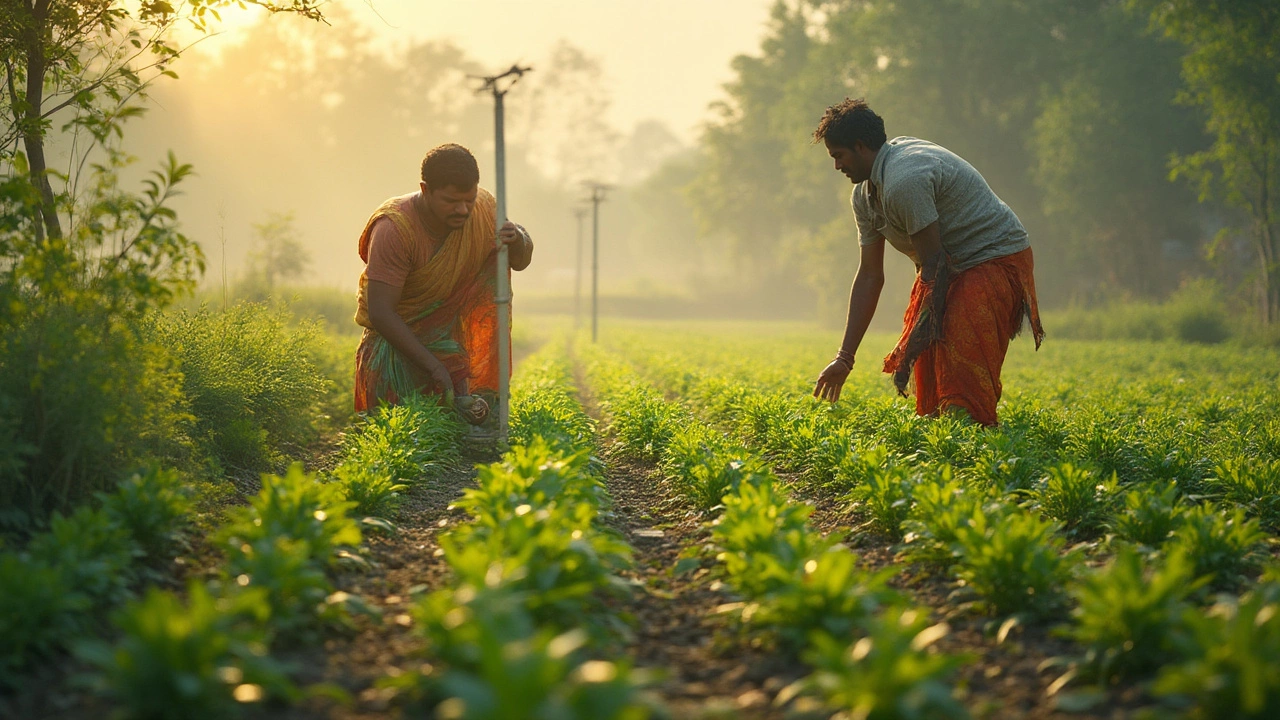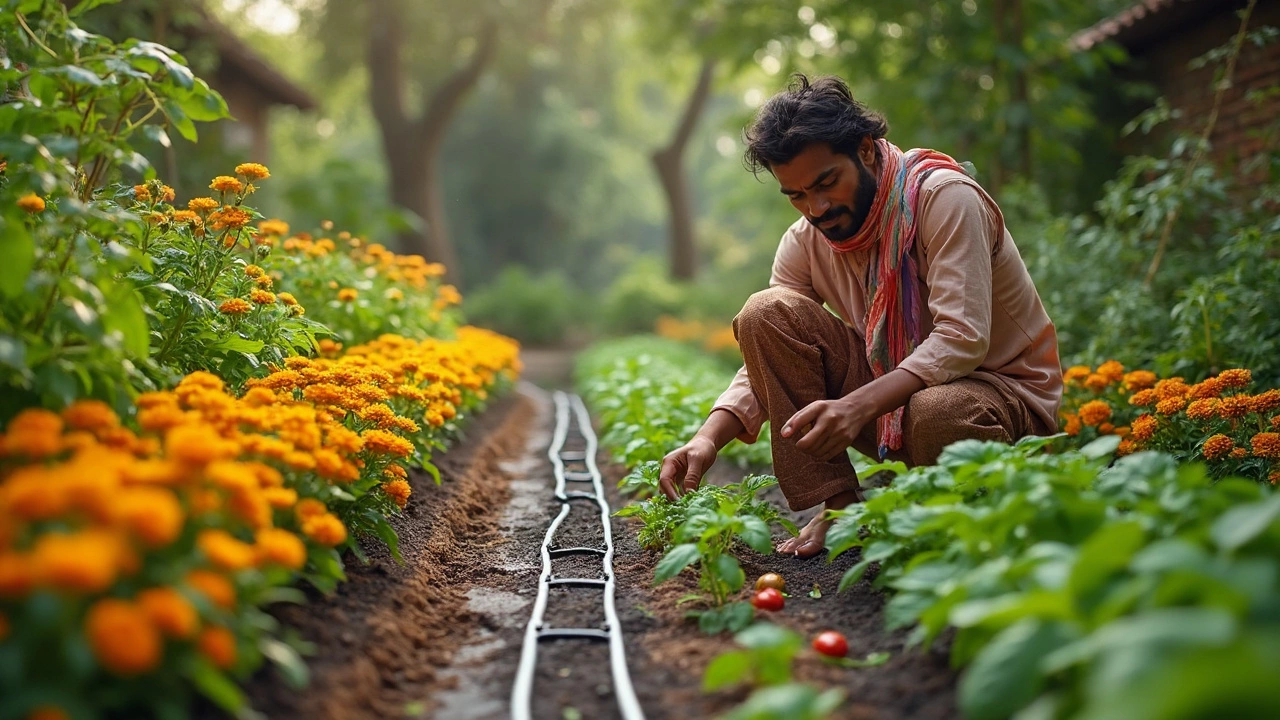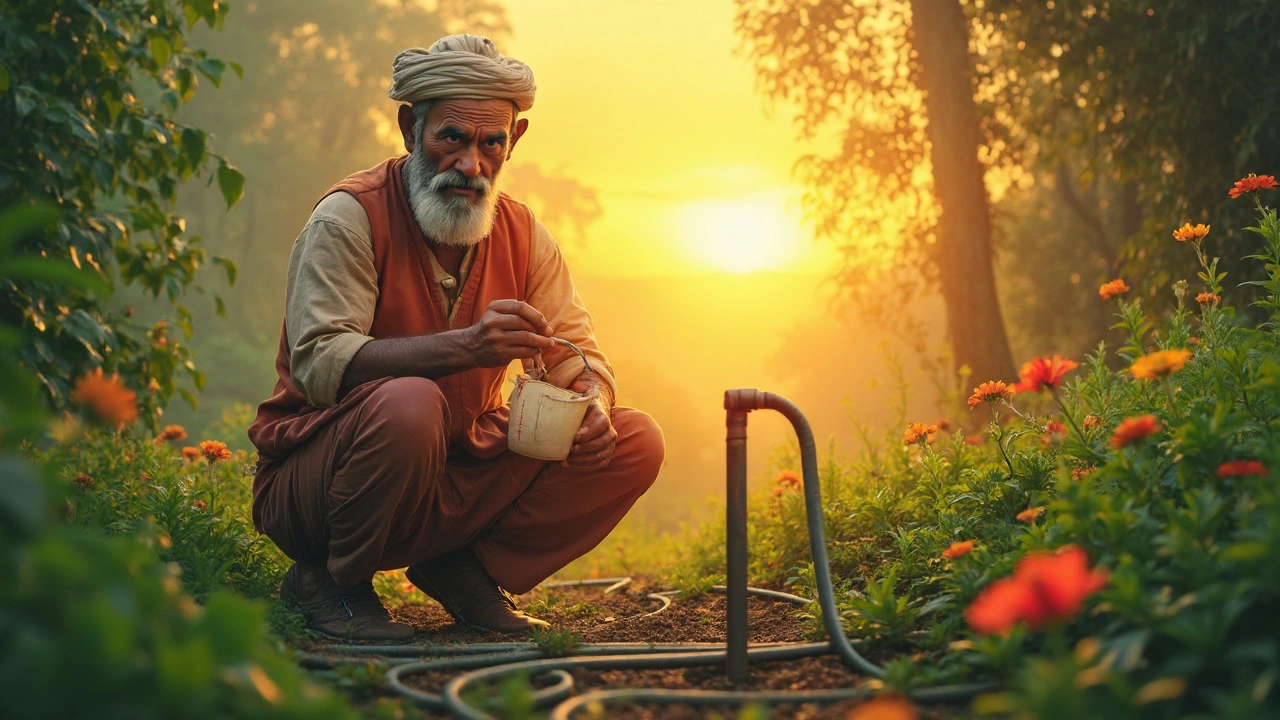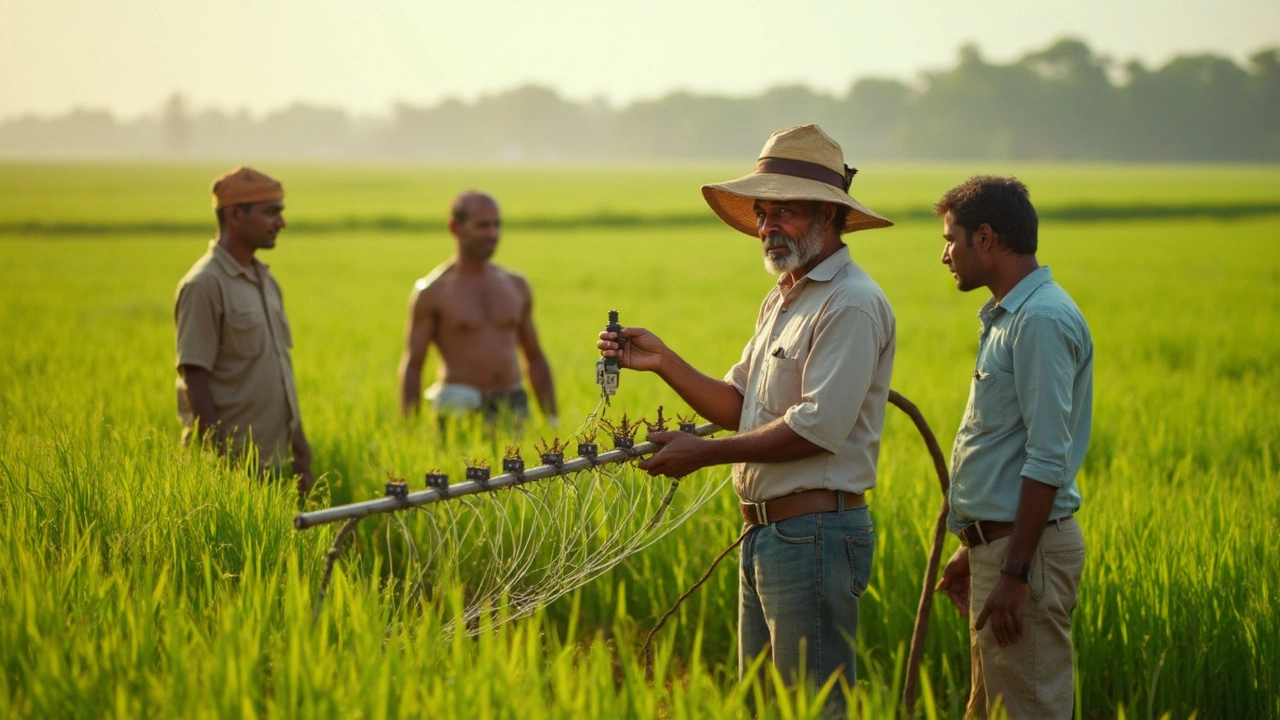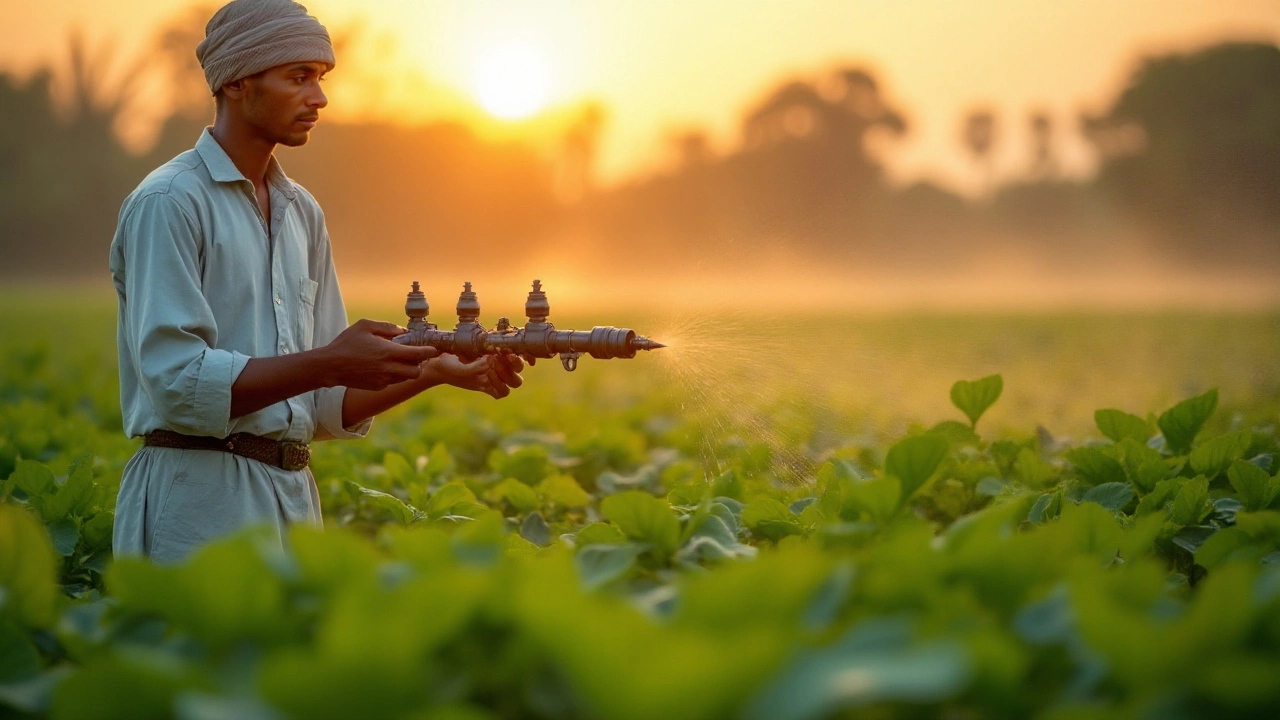Drip irrigation saves water and boosts yields, but it’s still rare in many areas. Let’s get real about why and bust some myths around it.
Drip Irrigation: How It Works and Why It’s Essential for Indian Gardens
When you think of drip irrigation, a method of delivering water directly to plant roots through a network of tubes and emitters. Also known as micro-irrigation, it’s one of the most efficient ways to water your garden in India’s hot, dry spells. Unlike sprinklers that lose half their water to evaporation, drip systems deliver water slowly, right where it’s needed—no waste, no runoff.
This system relies on drip emitters, small devices that control the flow of water to individual plants. But here’s the catch: they’re simple, but not foolproof. Clogs from dirt or minerals, uneven flow because of pressure drops, and cracked lines from sun or rodents are common. If your tomatoes are wilting even after watering, or your herbs look thirsty despite a running hose, the issue might not be how much water you’re using—it’s how it’s being delivered.
Water-efficient gardening, the practice of using less water without sacrificing plant health isn’t just trendy—it’s necessary in India, where groundwater is shrinking and monsoons are unpredictable. Drip irrigation cuts water use by up to 60% compared to traditional methods. That’s not just good for your bill—it’s good for your soil, your plants, and your future as a gardener.
You’ll find that many of the posts here focus on fixing what goes wrong with drip systems. Clogged emitters? We’ve got step-by-step cleaning tricks. Uneven watering? Learn how to balance pressure and layout. Damaged lines? Discover low-cost repairs using common household items. No fancy tools needed. Just smart, simple fixes that work in Indian conditions.
And it’s not just about the hardware. Drip irrigation changes how you think about watering. It’s not about setting a timer and walking away. It’s about watching your plants, noticing when leaves curl or soil stays wet too long, and adjusting. That’s the real skill—the quiet observation that turns a system into a living, responsive tool.
Whether you’re growing tomatoes on a balcony, vegetables in a backyard, or herbs in pots, drip irrigation gives you control. You’re no longer guessing how much water your plants need. You’re giving them exactly what they want, when they want it. And that’s the difference between a garden that survives and one that thrives.
Below, you’ll find real fixes, real stories, and real solutions from gardeners who’ve been there—clogged lines, dry patches, and all. No theory. No fluff. Just what works.
Figuring out how many drip emitters you need per zone can make or break your garden's success. This guide breaks down how to calculate just the right amount without wasting water or risking thirsty plants. You’ll learn about water flow, plant needs, and even see how to avoid common mistakes. Expect practical tips and real-life examples you can use right away. Save money, save water, and help your plants thrive.
Ever wondered if you should run your drip irrigation lines under landscape fabric? This article tackles the pros and cons, explains how setup choices impact your garden, and dishes out tips for simple, long-lasting maintenance. Skip the guesswork with real-world advice, plus doable ways to avoid clogging and water waste. Perfect for DIY gardeners looking for practical irrigation hacks.
Drip irrigation is a smart way to water plants, but figuring out how much water an inch of irrigation delivers can be tricky. This article breaks down the gallon-to-inch conversion, helping gardeners optimize their watering strategy. Knowing how much water is applied ensures efficient use and healthier plants. Get ready to demystify this aspect of drip irrigation with relatable examples and practical advice.
Most farmers still shy away from drip irrigation despite its efficiency. This article delves into the challenges and difficulties farmers face with adopting this water-saving technique. From understanding initial costs to the nuances of installation, get insights into why drip irrigation remains underutilized in agriculture.
Drip irrigation is a water-efficient method that uses emitters and drippers as key components. Understanding the difference between these can help optimize water distribution in gardens and farms. Emitters are devices that regulate water flow to plants, while drippers are often interchangeable terms but refer to specific styles within the emitter category. This article explores their distinctions, applications, and tips for choosing the right one for your needs.
